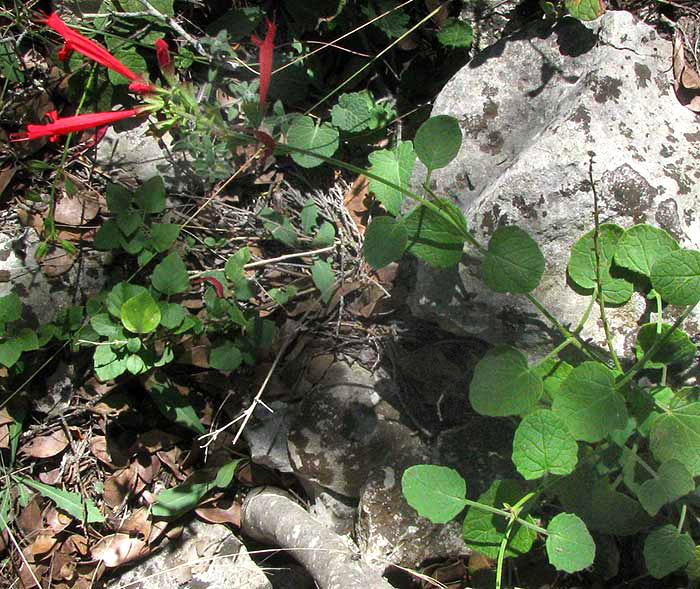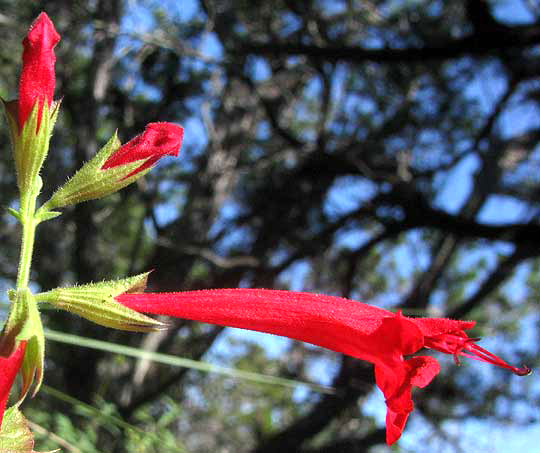Excerpts from Jim Conrad's
Naturalist Newsletter

from the November 4, 2012 Newsletter issued from the Frio Canyon Nature Education Center in northern Uvalde County, southwestern Texas, on the southern border of the Edwards Plateau; elevation ~1750m (~5750 ft); N29.62°, W99.86°; USA
CEDAR SAGE
We've run into several species of sage, genus Salvia, especially in Mexico, and now here's another, one that's very common here on thin, shaded soil beneath Ashe Junipers on our limestone hills. You can see it below:

This the Cedar Sage, SALVIA ROEMERIANA, one of several sage species found here. Some of the other Salvia species are blue flowered. The Cedar Sage's field marks include its habitat beneath Ash Junipers, its red flowers with especially long, slender corollas, and its leaves. Most of its stem leaves are more or less circular on long petioles, but its basal leaves tend to be pinnately compound.
As you might expect from a plant whose habitat is so dependent on an endemic tree -- the Ashe Juniper -- the Cedar Sage itself is endemic, in the whole world occurring naturally only in a handful of counties along the southern boundary of the Edwards Plateau, and into adjacent Mexico.
This is a very common plant on our hills, and a beautiful one, and to find that it's so little known outside our small area makes it a great find.